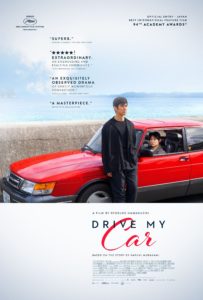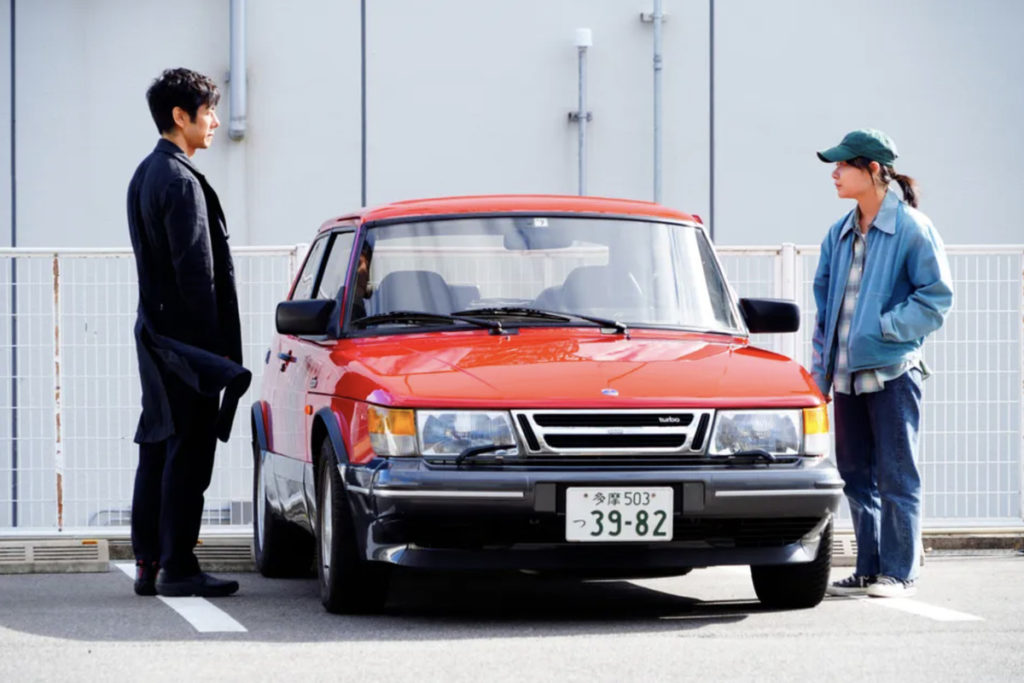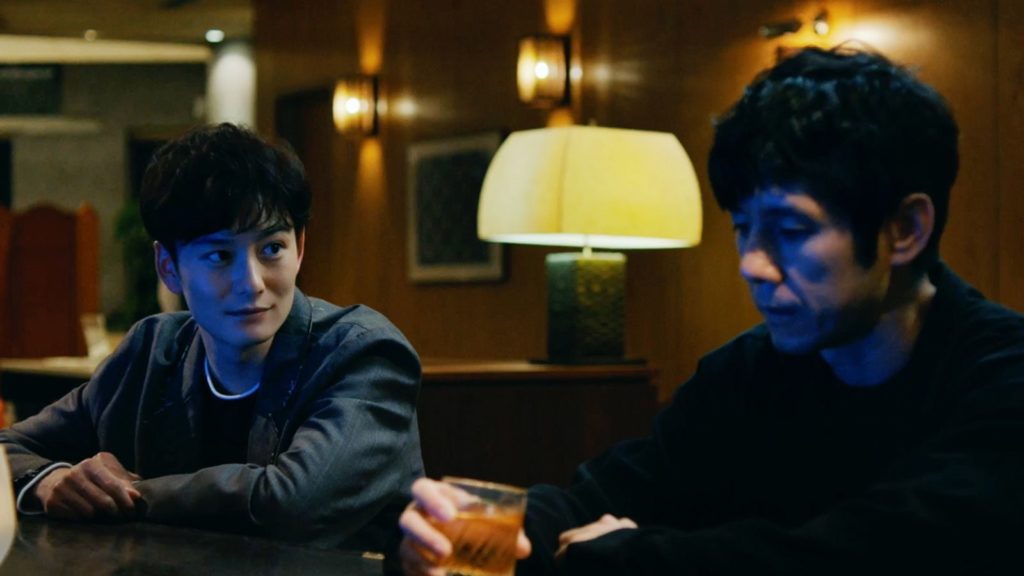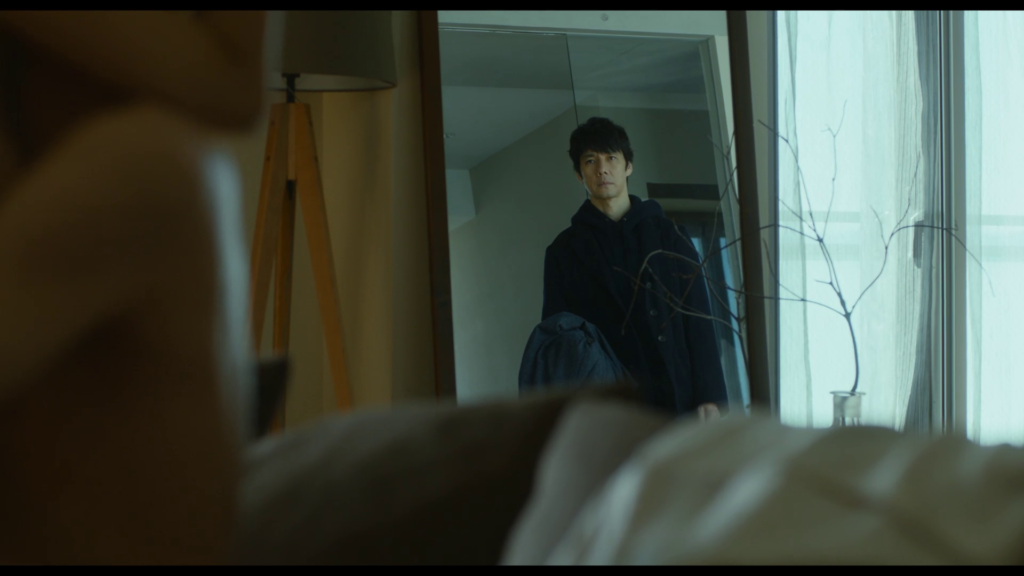A Fresh Take on Japan’s Prestigious Art House Sensation
DIRECTED BY RYUSUKE HAMAGUCHI/JAPANESE/2021

Much like the protagonist of Drive My Car, I’ve been spending the past several weeks going back and forth in my self-mandated task of writing a review for this film, pondering my options and remaining unsure of exactly where I will end up once the assignment has reached its conclusion. It was back on February 8 of this year that I volunteered to do a write-up on this film, a duty I was eager to take on since I had access to a digital copy and had observed a strong consensus of critical acclaim for director Ryusuke Hamaguchi’s latest work. Knowing that the film was being distributed by Janus Films and apparently destined for release by the Criterion Collection, all indications pointed to a very satisfying viewing experience on my part.
Soon after making the commitment, I sat down to check it out and was certainly impressed with what I saw. I don’t necessarily have a checklist of all the attributes that I look for in a movie, but if I did, Drive My Car would tick off quite a few of the boxes:
- Intelligent, literary-quality script that references both contemporary and classic sensibilities? Check.
- State of the art production values, including sound design, cinematography, editing, and more? Check.
- Intriguing and distinctive leading and supporting characters, most of whom traverse compelling arcs in the development of their respective narratives? Check.
- World class acting performances that bring those characters to life in memorable, impactful ways? Check.
- Unique locations and depictions of significant cultural friction and transition points that convey insight on concerns specific to the society being portrayed but also possessing broader resonance that make the story relevant to viewers in distant parts of the world? Check!
Yes, all those attributes, winsomely attached to a three-hour cinematic experience of suitably grand and ambitious scale, rack up a substantial degree of artistic heft, sufficient to bowl over a solid majority of viewers, quite a few of whom have enthusiastically embraced Drive My Car as their favorite film released in 2021 (even though quite a few of us are only seeing it well after New Year’s Day 2022 has already passed.)

This is the place where I will insert my caveat in acknowledging that I don’t watch enough new release movies to have what I consider to be a valid opinion on what films belong on the “Best of 2021” list. Don’t mind me if I gently sidestep that conversation, though I definitely take notice of the numerous claims to that effect, including a still-expanding ledger of awards that have accumulated since Drive My Car took three trophies at Cannes in May 2021 (including Best Screenplay). As of this writing, the film’s fate at this year’s Academy Awards ceremony is yet to be determined, but with four nominations, it seems at a minimum likely to snag the Best International Feature Film, and could rise to even greater heights as it’s in consideration for Best Director, Best Adapted Screenplay and Best Picture.
So, with all the momentum generated by Drive My Car’s apparent enshrinement as the pinnacle of current standards of highly refined cinema excellence, who am I to stand over on the curb lobbing a few mealy “yeah, but…?” spitballs its way as the juggernaut rumbles its way into the pantheon of 21st century art house masterpieces? I really have no desire to foist a contrarian take on my readers, since I see no point or value in adopting such a position. I think I have a clear understanding of the attributes that so many have praised, and their reasons for doing so. But I do want to engage with the film with a few respectful interrogations of how the project went about its business. And that desire to delve into some of the particular details of plot developments and character interactions is what led me to pause in writing my review. I didn’t think it was appropriate to get into spoiler territory back in February, before a majority of readers would have had a chance to see the film. But now that Drive My Car’s US theatrical run has had a couple months to proceed, and the film has become widely available to viewers with access to HBO Max, I feel like I can go ahead without committing a major breach of etiquette.
Let this serve as my spoiler alert, then. If you haven’t seen Drive My Car, I strongly advise that you do – it’s clearly destined to be regarded as one of the most important movies of this era and the honors are well-deserved. But there are still some things I want to discuss and maybe even take issue with.

The first knock that I’ll register is a slight one: the three-hour running time seems a bit excessive, or at least not obviously necessary for the film to make its desired impact. This is for the most part an intimate character study that affords many pleasures of various shapes and sizes as we get to know the individuals whose experiences overlap in the story. Some of those pleasures are immediately apparent, and some are more likely to be more appreciated upon a rewatch. But asking for a minimum commitment of three more hours in order to make those discoveries begins to impose a burden. I haven’t watched the film closely enough to offer any recommendations for exactly what could have been left out, but it feels like 15 to 30 minutes, maybe even more, could have been excised without diminishing the achievement.
A more substantial dissent from the chorus of praise that Drive My Car has generated is that I experienced a mounting sense of frustration at the rigorously stoic response of pretty much every character to what amounted to life-altering and often catastrophic events. Even though the narrative goes on to establish why Yusuke refrained from making a scene when he unexpectedly returned to his home and found his wife having sex with another man, his timidity in that moment really threw me off on the first viewing, and his passive demeanor seems to have set the tone for the rest of the cast as well.
There is no shortage of moments that, in a conventional (i.e. Hollywood) film could have served as cues for epic scale tantrums or other varieties of visible psychological meltdown:
- the sideswipe collision of Yusuke’s totemic Saab 900 Turbo
- his discovery of his dead wife Oto when he belatedly returns home one evening due to avoiding an unpleasant confrontation
- the backseat encounter between Yusuke and Koji in which both men engage in a low-key battle of understated one upmanship regarding their respective abilities to penetrate the late Oto’s interior life
- Koji’s arrest on charges that will likely land him in prison for manslaughter
- revelations about the death of the chauffeur Watari’s mother (due to the daughter’s deliberate inaction)
- the myriad conflicts that develop over the course of the acting company’s rehearsal and performance of Chekhov’s Uncle Vanya
…all of these events, and others, were sufficiently intense and emotionally wrenching, it seems to me, that at least one of the characters might have been justified in cutting loose with a hot and unbridled reaction, even if only a Japanese equivalent of something like “what the hell?!?” or “you gotta be f-in kidding me!” But no – everyone seems to take these devastating setbacks with stern equanimity – a slight clenching of the jaw, a furrowing of the brow, an evasive glance at no specific object serves to communicate that a world-shattering blow has been absorbed. Even the one outburst of rage-induced violence that does occur, after Koji pursues a photographer taking advantage of the actor’s celebrity status and beats him up in a hotel lobby, takes place off screen, and we know nothing about the interaction until we’re filled in by the police who arrive at rehearsal to take Koji into custody.

And just to clarify any potential misunderstanding of my thoughts here – I don’t necessarily think that a more conventionally emotive response from the characters would represent an “improvement” of the film. I get that there are cultural, temperamental and even aesthetic reasons for keeping the expressions at a low simmer, and I understand that each character has plausible reasons to keep their feelings in check. I even find that reserved quality rather refreshing to some extent, especially in contrast to the over-reliance on histrionic hot takes that pervades so much of popular entertainment in these times. But the build-up of relentlessly taciturn stoicism across the entire cast began to feel a little too obviously scripted over the course of nearly three hours. The release of those pent-up responses is finally granted to us in the film’s climactic scenes, and I am grateful for that. They are rendered with impeccable grace and dignity, though almost to a fault, as the expressions of remorse and surrender to life’s overwhelming indifference to our individual plights are delivered with such stately poise that it creates obstacles to our ability to fully identify with the characters.
With all that said, even as I voice my quibbles, I feel a sense of mild embarrassment at raising them. But I appreciate the chance to air them out all the same, and I’m open to further conversation about Drive My Car and the themes it raises wherever that opportunity presents itself. This is a memorable, impeccably crafted film that made a strong impression on first viewing, confirmed my respect, and cleared up some of my reservations the second time through, and looks more than capable of yielding additional rewards when I return to it in the future (presumably whenever Criterion gets around to issuing the film on a 4K disc, perhaps as soon as this summer?). Whatever the date of that occasion turns out to be, I’m ready to get back behind the wheel.

